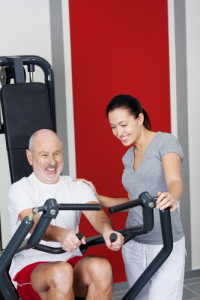Collaborative Thinking in Health & Wellness
Over the past 18 months, I have seen my primary M.D. three times, enjoyed the services of my favorite massage therapist six times, visited my chiropractor nine times, chatted with a local R.D. twice and seen my personal trainer regularly. And not one of them even asked if I was seeing any of the others, much less inquiring what their treatments or approaches to treatments might be. To me, that is like trying to achieve success with a baseball team where the 1st base coach, 2nd base coach, 3rd base coach and pitching coach never communicate with each other.
Success cannot occur in a vacuum, neither can trueindividual health & wellness, yet for decades these medical, fitness & wellness providers have proffered their services in distinct and distinctly separate spaces.

Even as the internet has made access to information easier and facilitated the sharing of knowledge, including private, HIPAA compliant information, these providers continue to operate in “informational silos.”
It is true that in the past some of these providers may have held less than favorable opinions of some of the other providers, but that is, and certainly should be, a thing of the past. No longer will M.D.’s consider Chiropractors “quacks”, R.D.’s claim nutritionists “just don’t know enough”, and Physical Therapists think of Personal Trainers as ”wanna-be P.T.’s who couldn’t hack the education.” Science, knowledge and time have evolved all these disciplines into valuable, useful and incredibly beneficial specialties, each offering specific training and specific methods to apply to their patients/clients. And all those patients/clients typically can benefit from their combined expertise and knowledge.
No longer is it sufficient to simply treat the symptoms. Real wellness needs to encompass the patient/client holistically… address the symptoms, understand the cause, strengthen the mind, examine the diet, resolve the issue and prevent future occurrences. And isn’t that best accomplished by viewing patient/client wellness as a Team Sport?
Over the years I have had the pleasure of knowing and speaking at length with many of these medical, fitness & wellness providers, and not one of them indicated there is anything in their training that says “Thou Shalt Not Collaborate.”
We are not talking about “asking for help.” Rather we are simply saying to include those other practitioners in the conversation. Instead of the M.D. telling the patient to “walk more to improve cardio health”, why not conference call with the Personal Trainer and discuss the walking program that is most appropriate. Let the Physical Therapist inform the Personal Trainer of any specific issues to address or avoid. Allow the Massage Therapist to work with the Chiropractor to ensure optimum results from both. In other words, (and the simplicity of all this may surprise you), just TALK TO EACH OTHER.
So, let’s start to make that happen. For more than 20 years my company has helped health clubs and fitness centers create mutually beneficial relationships with Physical Therapy practices, Chiropractic offices, Registered Dietitians, Nutritionists and Massage Therapists. Now is the time to extend the conversation, and, to return to my baseball metaphor, get ALL the coaches working together to create truly Championship results.
Cosmo Wollan is the Senior Executive at Synergy Cubed, a premiere consulting firm providing customized solutions to the health & fitness, parks & recreation, medical fitness and corporate wellness industries since 1994. His Fitness Industry clients have engaged him as an expert problem-solver in profit center development, retention strategies, customer engagement, sales training, programming design, operational streamlining and health club management.


 It isn’t an easy question to answer. We can tackle it by considering all of the dollars those who incur inflammatory issues, chronic challenges, and cellular degradation will have to invest in maintaining function and comfort. We might also attempt to place a monetary value upon lost quality of life. We might even consider the simple question, “what would someone pay to rediscover health” considering their fear and apprehension of the alternative, and from that extrapolate the value.
It isn’t an easy question to answer. We can tackle it by considering all of the dollars those who incur inflammatory issues, chronic challenges, and cellular degradation will have to invest in maintaining function and comfort. We might also attempt to place a monetary value upon lost quality of life. We might even consider the simple question, “what would someone pay to rediscover health” considering their fear and apprehension of the alternative, and from that extrapolate the value. HOW DO YOU STEP UP AND CREATE AN AUDIENCE?
HOW DO YOU STEP UP AND CREATE AN AUDIENCE?